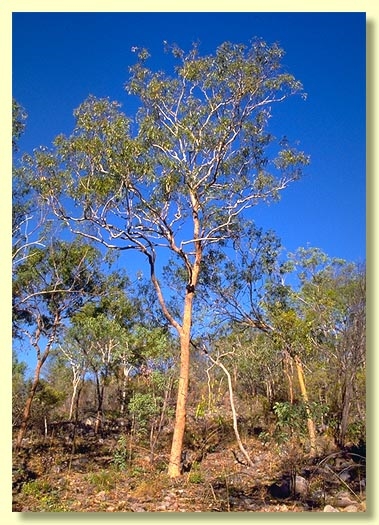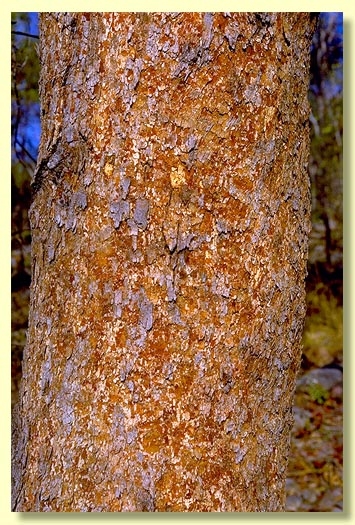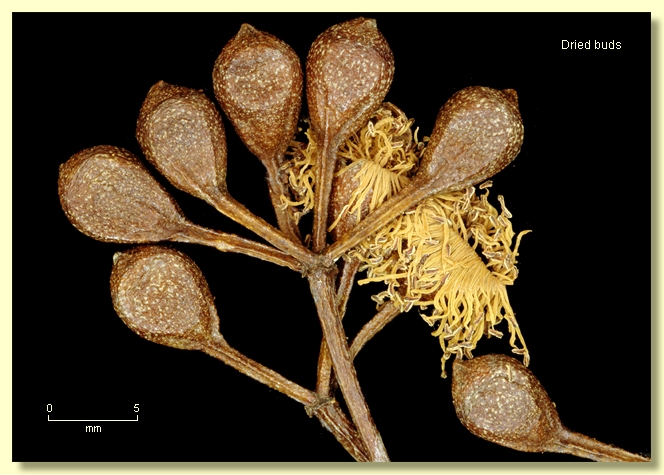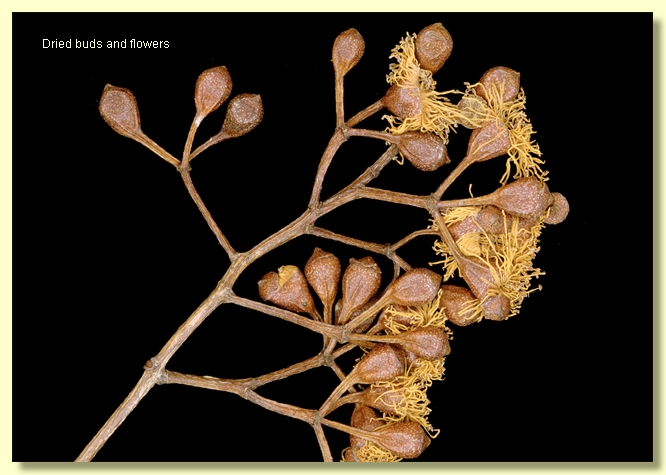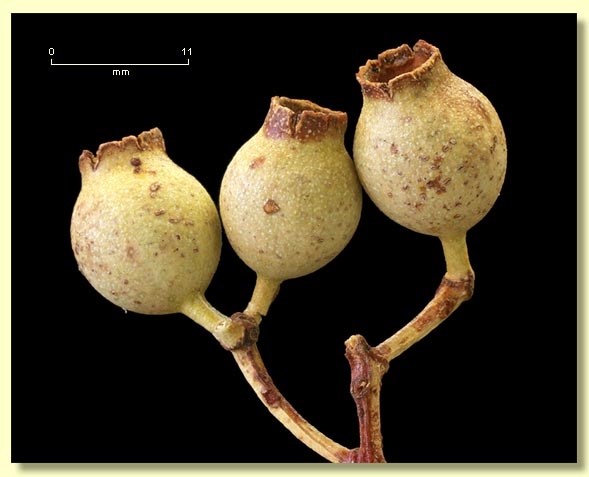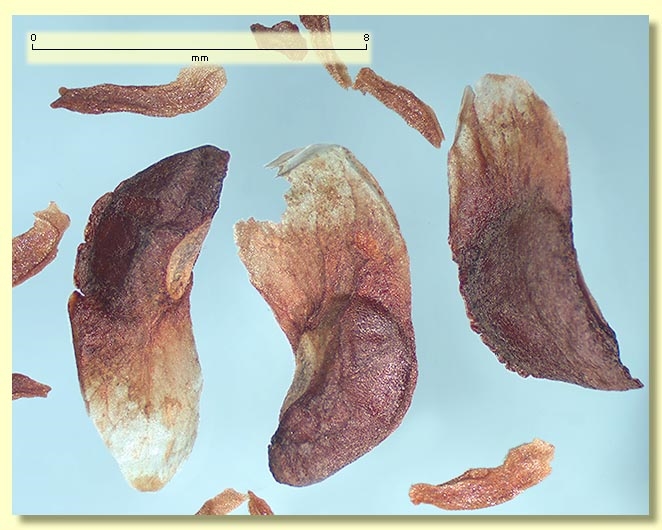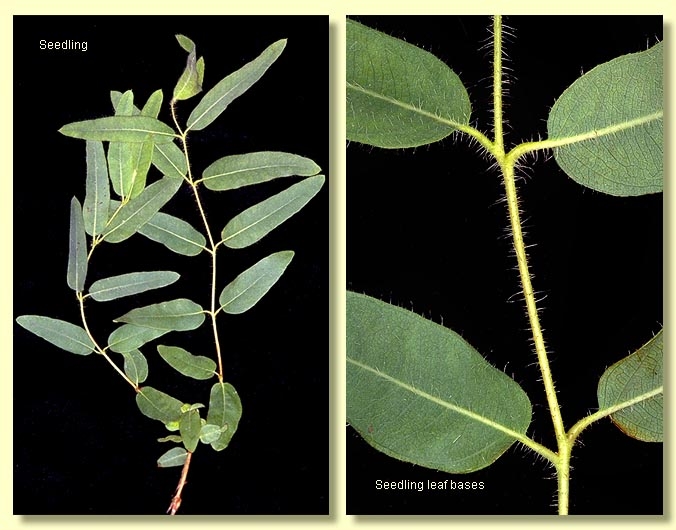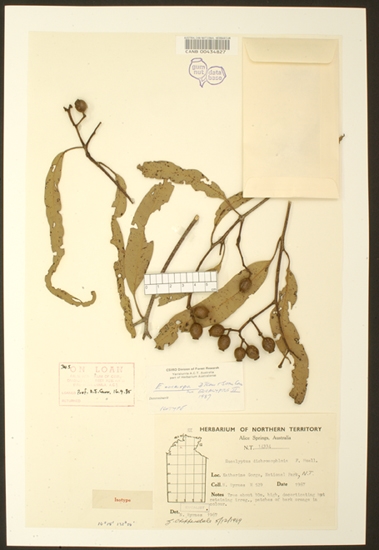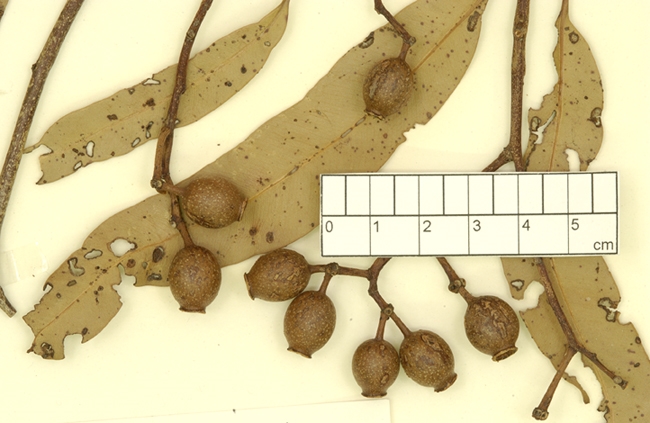Corymbia | Rufaria
Euclid - Online edition
Corymbia oocarpa
Corymbia oocarpa K.D.Hill & L.A.S.Johnson, Telopea 6: 293 (1995).
Tree 15 m tall. Forming a lignotuber.
Bark rough, grey to orange-brown and thinly tessellated over lower trunk only, becoming smooth above, grey and cream, or essentially smooth throughout with scaly patches of rough bark on the trunk.
Branchlets lack oil glands in the pith; smooth.
Juvenile growth (coppice or field seedlings to 50 cm): stems rounded in cross-section, setose with bristle-glands; juvenile leaves always petiolate, opposite for ca 25 nodes then becoming alternate, ovate to lanceolate, 5.5–9.5 cm long, 1.3–2(4) cm wide, base rounded to tapering, green, setose with bristle-glands.
Adult leaves alternate, petioles 0.8–2.6 cm long; blade lanceolate to falcate, 10–22 cm long, 0.9–2.7 cm wide, base tapering to petiole, margin entire, apex pointed, concolorous or slightly discolorous, glossy, green, side-veins greater than 45° to midrib, reticulation very dense, intramarginal vein very close to edge or confluent with edge, oil glands absent.
Inflorescence terminal compound, peduncles rounded to angular, 0.6–1.8 cm long, buds 7 per umbel, pedicels slender 0.3–1.2 cm long. Mature buds pyriform to obovoid, ca 0.7 cm long, ca 0.5 cm wide, glossy, smooth, scar absent (both opercula shed together at flowering), operculum shallowly rounded and often apiculate, stamens inflexed, all fertile, anthers oblong, dorsifixed, versatile, dehiscing by longitudinal slits, style long and straight, stigma blunt and ?papillose, locules 4, the placentae each with few ovules, not clearly arranged in rows. Flowers white.
Fruit pedicellate (pedicels 0.2–1.2 cm long), barrel-shaped to urceolate with a short neck that is erect or flared slightly at the rim, 1–1.4 cm long, 0.8–1.1(1.3) cm wide, smooth, disc descending vertically, valves 4, enclosed.
Seeds brown to blackish brown, 6–9 mm long, ellipsoidal with terminal wing, hilum ± ventral.
Cultivated seedlings (measured at ca node 10): cotyledons large, reniform; stems rounded in cross-section, prominently setose with bristle-glands; leaves always petiolate (petioles to 1 cm), opposite for at least 12 nodes, or becoming alternate at ca node 10, ovate to lanceolate, ca 5–11 cm long, ca 1.5–4 cm wide, base rounded or tapering, apex pointed, green, ± concolorous, setose on both surfaces.
Flowering has been recorded in March.
Slender tree endemic to the Top End of the Northern Territory, from Mudginberry south to Katherine Gorge, only on pockets of well-developed sandy soil on sandstone. Corymbia oocarpa has glossy narrowly lanceolate to falcate leaves in the crown, small glossy buds in terminal inflorescences, small urn-shaped to barrel-shaped fruit, and hairy seedling and juvenile growth. The bark is rough and thinly tessellated only over the lower trunk.
Within its narrow natural range C. oocarpa is often found with another bloodwood, C. arnhemensis, which has similar buds and fruit but differs in being thickly rough-barked over most or all of the trunk, and having crown leaves that are dull and very clearly paler on the underside rather than glossy and ± concolorous.
C. oocarpa is closely related to a more widespread bloodwood, C. dichromophloia, which differs in being smooth white-barked with unshed small flakes of red and red-brown bark and having often larger juvenile leaves which are setose/scabrid only at lowest nodes. The adult leaves of C. dichromophloia are never as glossy as those of C. oocarpa. The glossy-leaved C. bleeseri differs in having longer fruit on longer pedicels compared with C. oocarpa and a more north-westerly distribution, not associated with the elevated sandstone areas. Both C. greeniana and C. umbonata have thinner rough bark than C. oocarpa usually does, glabrous (not setose/scabrid) juvenile leaves and also occur to the west of its range. C. latifolia and C. foelscheana also have more extensive though thin rough bark than does C. oocarpa, and differ clearly in the broader, dull adult leaves and large glabrous juvenile leaves.
MORE ABOUT CORYMBIA
MORE ABOUT RED BLOODWOODS
Corymbia oocarpa: Greek oo, an egg and carpos fruit, referring to the shape of the gumnut.

